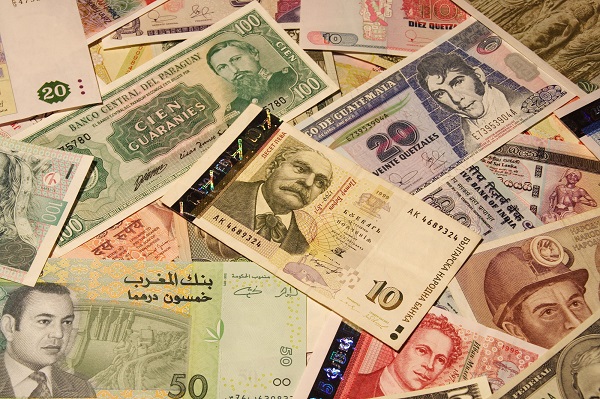Emerging Market Currency Downfall and its Effect on Emerging Economies


by Nicolas Clavijo
Emerging market currencies are rapidly falling due to a combination of internal pressures and the end of post-crisis stimulus measures implemented by the central banks in advanced economies. Since the beginning of 2018, the currencies of the 20 largest emerging economies (E20) have fallen on average by 8% against the dollar, with extreme cases such as the Argentine peso and the Turkish lira, which fell 48.96% and 22.66% respectively [1].
The strengthening of the dollar and the increase in Treasury yields in advanced markets triggered massive emerging market currency sell-offs and the withdrawal of large amounts of capital from emerging economies. This year, six major Asian emerging markets suffered one of the largest foreign capital flight since 2008 as overseas funds pulled out $19 billion from India, Indonesia, the Philippines, South Korea, Taiwan and Thailand [2]. Drops in foreign investment have translated into lower demand for local currency, followed by speculative sell-offs. The effect of rising interest rates on exchange rates is common to most E20 economies, and it is expected to continue as investors anticipate that the Federal Reserve will justify the case for additional rate hikes this year [3].
And yet, there are several other issues that contributed to the destabilization of E20 currencies in this recent downturn, including political uncertainty and instability. The electoral cycle has been altering the political backdrop with a direct impact on how investors see the future of the currency of each market. For example, in Brazil, “Investors have taken the gloves off against the Brazilian real in retaliation for rising political uncertainty, driving it to two-year lows of about R$3.94 against the dollar” [4] and fund managers are pessimistic about the chances of non-left-wing candidates succeeding [3]. In Mexico, the peso volatility and price uncertainty were at its peak as leftist candidate Andres Manuel Lopez Obrador (AMLO) won the elections on the 1st of July. According to Jorge Mariscal, EM chief investment officer at UBS wealth management, many investors are “worried by [Amlo’s] ideology, his backwardness, his stubbornness” [5] and the effect his considered populist and protectionist proposals might have on the Mexican economy. All these changes greatly affect EM currencies as investors are particularly sensitive to political issues in these countries and fear that a shift towards the left could lead to an economic crisis like in Venezuela.
Some EM currencies depreciated as a result of widerning fiscal deficits generated by government spending increasingly financed by international debt, which deteriorates the risk of high levels of inflation. In Turkey, “investors and strategists remain deeply concerned that the government, chasing rapid economic growth, will take measures to counter the central bank’s monetary tightening” and, “with inflation running above 12 percent, and a widening current account deficit” [6] the Turkish lira is highly vulnerable to any external shock. In Argentina, President Mauricio Macri is facing serious issues in implementing his economic reform program in the post-Kirchner era. The situation was so critical, that in order to counter the 48.96% drop in value of the Argentine peso in 2018 the country received a $50bn International Monetary Fund rescue package, showing “support for the market-friendly President Mauricio Macri’s attempt to forestall a return to populism” [7], a reminder that EM currencies are highly sensitive to fiscal credibility.
The downturn can also be attributed to the dependence many emerging economies have on trade and its relationship to commodity prices. The threat of a tariff war negatively impacts investors’ expectations of future performance and this is reflected in the currency devaluation. In Mexico, 81% of exports are directed to the US and exports represent 37.9% of its GDP [8]. The Mexican peso has been highly reactive to the NAFTA negotiations and the current trading tensions in North America. In India, 80% of fuel is imported from the US. Thus, higher oil prices and the threat of a global trade war have forced the rupee to its lowest level ever against the dollar [9]. The strong dollar has impacted not only the rupee but also the Malaysian ringgit, the Indonesian rupiah, and other emerging Asian currencies.
While countries that rely strongly on exports benefit in part from currency devaluation as exports become cheaper and more competitive in foreign markets, this risks being counteracted by tariffs as the US accuses countries such as China of unfairly devaluating its currency to seek a competitive advantage for its exports. Even Bo Zhuang, chief China economist at TS, stated that “Any benefit from a major renminbi devaluation would be far outweighed by the negative consequences: accelerated capital flight, domestic liquidity tightening and the possibility of increased credit stress” [10]. Additionally, devaluation is likely to cause inflation, especially in countries that heavily rely on imports like Mexico, India or South Africa, whose imports represent more than 20 percent of GDP [8]. High rates of inflation would reduce local purchasing power, especially affecting the middle and lower classes which are considered the engine of development for these countries. Those with high levels of international debt such as Argentina risk a sharp rise in the cost of debt repayments and even default.
In short, the EM currency downfall stands as a major challenge for emerging economies as its implications are diverse and its evolution uncertain.
